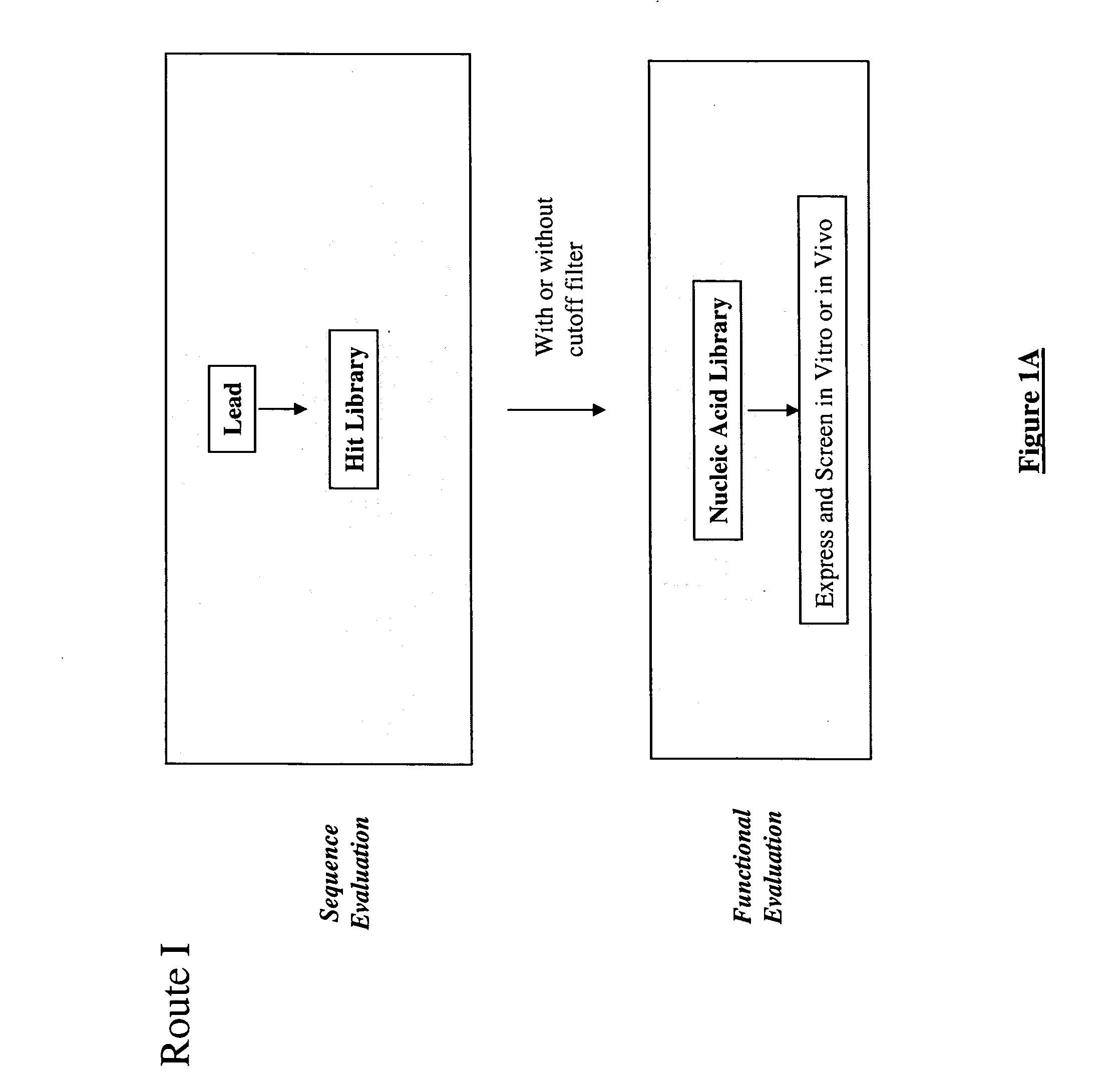Generation and selection of protein library in silico
a protein library and silico technology, applied in the field of computer-aided design of proteins, can solve the problems of laborious and unpredictable repeating fine tuning process, and achieve the effect of improving binding affinity and high throughpu
- Summary
- Abstract
- Description
- Claims
- Application Information
AI Technical Summary
Benefits of technology
Problems solved by technology
Method used
Image
Examples
example
[0750] Methods of the present invention were used for in silico construction of antibody libraries. The vascular endothelial growth factor (VEGF) is chosen as the antigen for the present proof-of-principle experiments in order to demonstrate the present invention in antibody design. A rich collection of sequence and structure information is available for VEGF and it receptor (Muller Y A, Christinger H W, Keyt B A, de Vos A M (1997) Structure 5, 1325-1338; Wiesmann C, Fuh G, Christinger H W, Eigenbrot C, Wells J A, de Vos A M (1997) Cell 91, 695-704), a complex between VEGF and its humanized antibody (Muller Y A, Christinger H W, Li B, Cunningham B C, Lowman H B, de Vos A M (1998) Structure 6, 1153-1167, and a complex between VEGF and its matured antibody (Chen Y, Wiesmann C, Fuh G, Li B, Christinger H W, McKay P, de Vos A M (1999) J Mol Biol 293, 865-881). These provide a good platform for testing the methods of the present invention. By using the methods provided by the present inv...
example 2
Generation of Anti-VEGF Antibody Libraries for Framework Optimization
[0815] VEGF is a key angiogenic factor in development and is involved in the growth of solid tumor by stimulating endothelial cells. A murine monoclonal antibody was found to block VEGF-dependent cell proliferation and slow the tumor growth in vivo (Kim K J, Li B, Winer J, Armanini M, Gillett N, Phillips H S, Ferrara N (1993) Nature 362, 841-844). This murine antibody was humanized (Presta L G, Chen H, O'Connor S J, Chisholm V, Meng Y G, Krummen L, Winkler M, Ferrara N (1997) Cancer Res. 57, 4593-4599; Baca M, Presta L G, O'Connor S J, Wells J A (1997) J Biol Chem 272, 10678-10684) using random mutagenesis at some key framework positions following grafting of antigen-binding loops. Typically, after rounds of site-directed mutagenesis and selection, humanized antibodies are generated by replacing a human or concensus human framework with non-human amino acids from the parental non-human antibody at certain pre-det...
PUM
 Login to View More
Login to View More Abstract
Description
Claims
Application Information
 Login to View More
Login to View More - R&D
- Intellectual Property
- Life Sciences
- Materials
- Tech Scout
- Unparalleled Data Quality
- Higher Quality Content
- 60% Fewer Hallucinations
Browse by: Latest US Patents, China's latest patents, Technical Efficacy Thesaurus, Application Domain, Technology Topic, Popular Technical Reports.
© 2025 PatSnap. All rights reserved.Legal|Privacy policy|Modern Slavery Act Transparency Statement|Sitemap|About US| Contact US: help@patsnap.com



